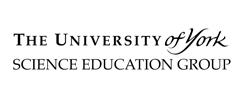- View more resources from this publisher
 University of York Science Education Group (UYSEG)
University of York Science Education Group (UYSEG)
Minerals Unit Guide
This Salters’ Chemistry Course unit from the University of York Science Education Group covered:
* The extraction and production of important materials from sulphide ores, iron ore and limestone.
* The use of relative atomic masses for determining the masses of reactants and products.
* The Periodic Table as an important means of summarizing information.
* Minerals as sources of raw materials.
* The effects of mining on the environment and society.
* Problems and benefits of recycling waste.
Core contents
MN1: What materials can we get from minerals?
MN2: How does mining affect the environment?
MN3: What can we get from sulphide ores?
MN4: Investigating catalysis
MN5: How is iron extracted from iron ore?
MN6: Why is limestone important
MN7: How much lime can be obtained from limestone?
MN8: How can we use the Periodic table?
MN9: Mining or recycling?
Show health and safety information
Please be aware that resources have been published on the website in the form that they were originally supplied. This means that procedures reflect general practice and standards applicable at the time resources were produced and cannot be assumed to be acceptable today. Website users are fully responsible for ensuring that any activity, including practical work, which they carry out is in accordance with current regulations related to health and safety and that an appropriate risk assessment has been carried out.
Downloads
-
Minerals unit guide 8.35 MB




